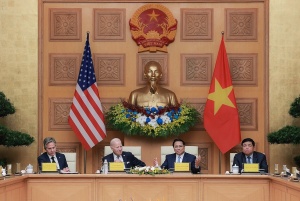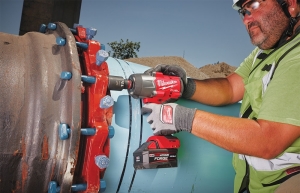A new chapter in the Vietnam-US relationship
 |
| Nguyen Viet Ha, managing director of BowerGroupAsia Vietnam |
It was an honour to join other business executives at the Presidential Place in Hanoi on September 11 for the state luncheon with US President Joe Biden and Vietnamese President Vo Van Thuong.
I had never been so close to a US president before. As I watched the two leaders sitting side by side and speaking as friends, I was reminded of how far the bilateral relationship had come in such a short time – considering both countries were enemies only 50 years ago.
Biden’s visit builds on the legacies of his predecessors, presidents Bill Clinton and Barack Obama, to normalise the relationship in 1995 and upgrade it to a comprehensive partnership in 2013.
These historic decisions paved the way to advance bilateral cooperation, particularly in terms of trade and investment. Starting from a modest trade turnover of $450 million in 1995, the United States has become Vietnam's largest trade partner, with a turnover of more than $123 billion.
Vietnam, on the other hand, has become the largest trading partner of the US in ASEAN and the seventh-largest trade partner globally. These achievements are the result of the great efforts from both Washington and Hanoi to strengthen ties.
With this latest engagement, the two countries have upgraded their relationship from a comprehensive partnership to a comprehensive strategic partnership. This is the highest tier of diplomatic relations, which Vietnam enjoys with only four other countries – China, South Korea, India, and Russia. The new partnership clears the way for greater economic cooperation, with a focus on innovation, technology, and investment.
Businesses are optimistic about the new sector-specific opportunities Biden emphasised during his visit, ranging from semiconductors and science and technology to energy and public health.
Agreements made under the Memorandum of Cooperation on Semiconductor Supply Chains, Workforce, and Ecosystem Development could provide access to the $500 million International Technology Security and Innovation Fund to further develop Vietnam’s current semiconductor ecosystem, regulatory framework, workforce, and infrastructure needs.
The US has also offered technical support and capacity building through higher education and training. Additional initiatives were announced to promote talent cultivation, policy coordination, sector efficiency, and collaboration on AI, research and development, and higher education.
Specifically, $12.8 million in funding will be used to help the Ministry of Education and Training modernise and internationalise the higher education system in Vietnam. Once implemented, these initiatives are expected to benefit millions of Vietnamese personnel, helping the country meet its critical demand for skilled and educated labourers.
As Vietnamese Prime Minister Pham Minh Chinh said, "The Vietnam-US comprehensive strategic partnership represents new thinking, a new vision, and new motivation, and it creates new strengths and new values."
The upgraded partnership opens new opportunities for the two countries and their businesses to expand ties and turn today’s commitments into tomorrow’s reality. So, in President Biden’s words, “let’s keep it up.”
 | Vietnam and US companies collaborate on semiconductors and innovation High-level meetings between the US and Vietnam have paved the way for a strategic partnership focusing on the technology sector, with semiconductors and innovation at the forefront. |
 | Fresh US investment likely on back of presidential visit A hallmark visit by the US president to Vietnam will help usher in a new landscape for bilateral cooperation in trade and investment. |
What the stars mean:
★ Poor ★ ★ Promising ★★★ Good ★★★★ Very good ★★★★★ Exceptional
Related Contents
Latest News
More News
- CONINCO announces new chairman and CEO (December 10, 2025 | 11:00)
- How AWS is powering the next-gen data era (December 09, 2025 | 13:14)
- Outlook in M&A solid for Singapore (December 08, 2025 | 10:31)
- Vietnamese firms are resetting their strategy for global markets (December 05, 2025 | 17:04)
- LPBank Securities accelerates AI and data innovation with AWS (December 05, 2025 | 09:00)
- Improving traceability capacity with Zebra Technologies (November 26, 2025 | 10:08)
- Ho Chi Minh City engages 500 CEOs in dialogue on building global megacity (November 25, 2025 | 16:00)
- CEO shares insights on Phu My 3 IP’s journey to green industrial growth (November 17, 2025 | 11:53)
- NS BlueScope CEO highlights decade of sustainable steel efforts (November 15, 2025 | 10:00)
- SCG maintains strong cash flow and drives low-carbon growth in Q3 (November 07, 2025 | 09:53)

 Tag:
Tag:





















 Mobile Version
Mobile Version